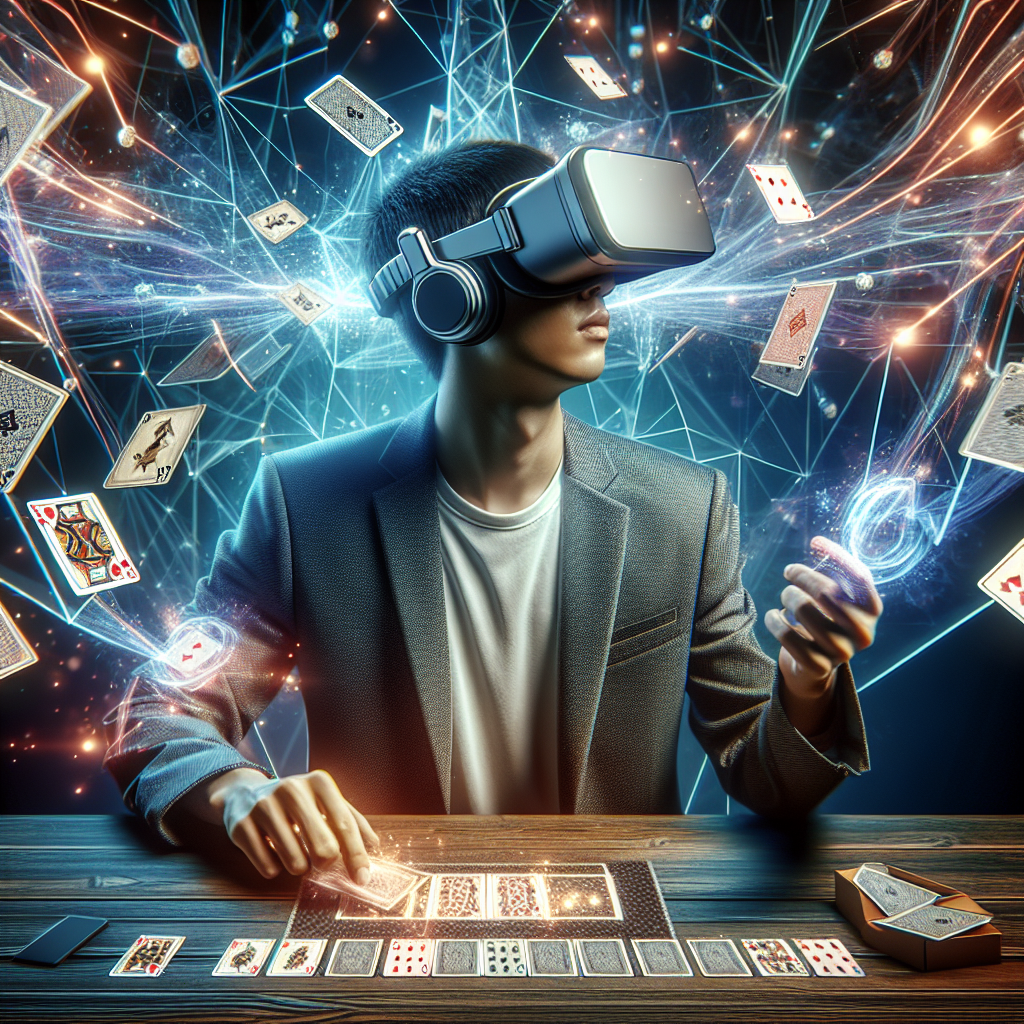The Future is Now: How AR and VR are Enhancing Card Game Experiences
The world of gaming has undergone a seismic shift in the past decade, with augmented reality (AR) and virtual reality (VR) emerging as transformative technologies that offer novel ways to interact, play, and connect with others. Among the genres benefitting from these advancements are card games—time-honored classics that have endured over generations. Today, AR and VR are enhancing card game experiences in ways that are reshaping how players engage with their favorite pastimes.
A New Dimension of Gameplay
Traditional card games, whether played around a kitchen table or in a crowded tournament space, have always relied heavily on social interaction and strategic thinking. While the digital realm has provided online platforms for playing these games, AR and VR take the engagement to another level by immersing players in entirely new settings.
Augmented Reality: Bridging Physical and Digital Worlds
AR technology allows players to overlay digital elements onto the real world. Imagine an epic game of poker with holographic cards dealt on your living room table. Using AR glasses or applications on smartphones, players can manipulate cards, observe movements of their opponents, and even view card statistics or probabilities, all integrated into their physical environment.
For example, proprietary AR card games such as HoloCards combine a physical deck with a companion app that overlays digital effects and animations as players progress through the game. These enhancements can introduce dynamic elements such as special abilities or effects triggered by specific card combinations, making each game session unique. This blend of tactile interaction and digital flair revitalizes the traditional card game experience, appealing to both seasoned players and newcomers.
Virtual Reality: Dimming the Boundaries
The immersive qualities of VR offer a strikingly different experience. VR transports players into fully realized virtual environments, allowing them to engage with card games in a shared digital space. Players can don a VR headset and find themselves seated at a grand table in a fantasy castle or a bustling café, complete with life-like avatars of their friends or family, no matter the physical distance separating them.
Platforms such as Tabletop Simulator and PokerStars VR illustrate the potential of this technology. In these virtual environments, players not only experience the game differently but also interact with it in more meaningful ways. Players can physically gesture to signify actions, creating a more dynamic and engaging atmosphere. Beyond just card games, VR has opened avenues for social interactions and tournaments that can accommodate players from around the globe.
Enhanced Strategy and Learning
AR and VR also provide opportunities for players to deepen their understanding of card games through analytics and practice modes. By incorporating AI and machine learning into AR and VR platforms, players can practice their strategies against computer-generated opponents that adapt and learn from their style. This feature allows players to hone their skills, making them more competitive in real-life games.
Moreover, through VR or AR tutorials, players can learn the rules in a guided, intuitive manner. These visually engaging instructions can replace complicated manuals with interactive lessons where players can practice their moves in real time, making the learning process enjoyable and effective.
The Social Aspect
Despite the rise of digital gaming, the social aspect remains a core component of card games. AR and VR reclaim the camaraderie of in-person play that online platforms often lack. As friends gather in a shared virtual space or interact with digital overlays, the essential connection fostered through gameplay is revitalized.
Additionally, community-driven platforms such as VRChat and AltspaceVR allow players to form friendships and organize games with others around the world, leading to increased inclusivity and access. The potential for events, showcases, and tournaments to take place in these virtual spaces adds another layer to the social fabric, enabling players to engage in a variety of formats outside of traditional norms.
Conclusion
As AR and VR continue to advance, the possibilities for enhancing card game experiences are limitless. These technologies not only elevate gameplay by introducing exciting dynamics but also preserve the social connections that make card games so beloved. The future of card gaming is not merely digital; it is an immersive blend of both worlds. As players embrace these innovations, they will find that the excitement of the game can now transcend borders, creating richer experiences that honor tradition while exploring the uncharted territories of technology. The future is indeed now, and it’s reshaping how we engage with card games in ways we can only begin to imagine.




